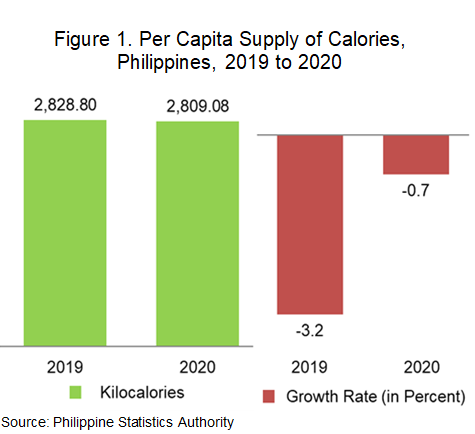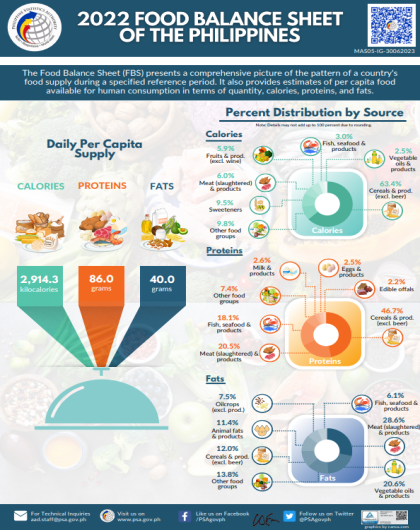The Daily Per Capita Food Supply of Calories was Recorded at 2,914.3 Kilocalories in 2022
The Food Balance Sheet, compiled by the Philippine Statistics Authority, is an aggregated and analytical data set that presents a comprehensive picture of the pattern of a country’s food supply during a specified reference period. It provides estimates of per capita food available for human consumption in terms of quantity, calories, protein, and fat contents.
 Calories
Calories
In 2020, the daily per capita supply of calories from the aggregated food products at
Proteins
For protein, the per capita supply in 2020 was registered at
Fats
The daily per capita supply of fats in 2020 went down to
Self-Sufficiency Ratio (SSR)
In 2020, the self-sufficiency ratio reached
Import Dependency Ratio (IDR)
The import dependency ratio for food was registered at
DENNIS S. MAPA, Ph.D.
Undersecretary
National Statistician and Civil Registrar General

